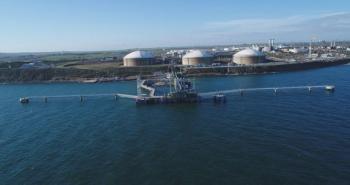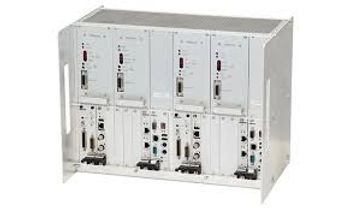
Powergen EU Highlights Power Load Factor Misery
“How could this happen?” asked Martin Giesen, chairman of Advance Power AG, during his keynote address at the June PowerGen Europe meeting in Cologne, Germany. He was alluding to the devastating series of events that resulted in the combined 200 billion euro capitalization losses since t he last recession of three major European utilities RWE, E.ON and GNP. That’s the annual gross national product of Denmark, he added, or about 1,000 euros for every EU citizen. “A lot of money!”
The causes of this misery are easy to find, he explained. The recession reduced power consumption while fuel prices remained about the same. At the same time, countries such as Germany subsidized renewables, whose impact was enormously underestimated, and mandated a rapid exit from nuclear power as a gut reaction following the Fukushima disaster.
As a result, load factors for gas-fired power generation plants in Europe were down to single digits, and coal plants were not realizing half the margins they needed to recover their costs. This completely changed the power industry, undermining investor trust in ownership rights and the rights to enjoy the benefits of that ownership.
Giesen suggested a way out, however. What the market does not provide, the government must, he said, by stepping in to ensure stable revenues to attract investors. Utilities must also transition their business to produce 40% to 50% of operating profits from regulated areas and an additional 10% to 15% of profits from renewable subsidies. In total, 60% to 70% of utility profits should come from stable and predictable sources that investors can depend on.
On the exhibit floor, several companies introduced new products.
Siemens enhanced its SPPA-T3000 instrumentation and control system with a newly designed user interface, new intelligent alarm system and a novel approach for central control rooms. The user interface offers enhanced, optimized operating efficiency. Socalled “trip stop” buttons provide the user with distinct instructions on how to react to faults that occur in the power plant. A newly developed homogenization concept enables control and monitoring of remote power plants from a single, central control room.
The key consideration for the layout and design of the SPPAT3000 user interface is to ensure the operator can intuitively react reliably and correctly in any situation. Vital criteria for this include prioritization, individualization and ergonomics. Priority functions for daily use are placed prominently in clear view in the control bar and can be quickly activated with one click of the mouse.
All other functions are arranged lower in the hierarchy in the function library and can be reached with one-to-two clicks. The operator can decide individually which functions are to be displayed in the control bar.
Sulzer is now manufacturing components for GE MS6001FA+e gas turbines at its Venlo Service Center in the Netherlands. The replacement parts are equivalent to OEM specification for both hot and cold sections. Engineering tools such as Finite Element Analysis (FEA) and Computational Fluid Dynamics (CFD) for stress, aero- and thermodynamics, are all used during the manufacturing process. Sulzer has also restructured its business into a more unified brand. The Pumps Equipment Services Division has been combined with the Rotating Equipment Services Division.
Toshiba received an order from Hokkaido Electric Power Co. (HEPCO) for a high-efficiency combined cycle power system for the Ishkariwan Shinko Power Plant Unit 1; HEPCO’s first liquefied natural gas (LNG)-fueled thermal power plant. The power generation system combines GE’s latest high-efficiency 9HA gas turbine with Toshiba’s most-advanced steam turbine. Toshiba will be the prime contractor for the project.
The gas turbine combined cycle system is said to achieve a thermal efficiency of 62%, the world’s highest at the lower heating value. The plant will have an output capacity of 569.4 MW; construction is expected to start October 2015.
Conax has designed new exhaust-gas sensors that address the problem of premature tip breakage. This common failure occurs because of thermal expansion between the radiation shields and sensors that causes sensors to vibrate within the shield. Conax added a high-temperature compression spring into the sensor sheaths so that the spring’s oscillating characteristics dampens the vibration and keeps the tip stable by ensuring continuity of contact between the sheath and the shield.
Reintjes has developed the RTG 800, a high-speed gearbox in the 560 to 800 Series, available at power ranges of 1,400 kW and 30,000 kW.
Mitsubishi Hitachi Power Systems has received an order to build a 480 MW natural gas fired, gas turbine combined cycle power plant from Kyushu Electric Power Co. The plant will be at the utility’s Shin Oita Power Station and will use an advanced M501J gas turbine at its heart and is slated to go onstream in July 2016. The plant will include a SRT-50 steam turbine with 50-inch blade (turbine end), a heat recovery steam generator and a generator.
ExxonMobil has released Mobil DTE 732M gas and steam turbine oil. In field tests the product delivered enhanced cleanliness, thermal stability and minimized varnish formation, said the company. It is recommended for Mitsubishi Heavy Industries’ range of non-geared, single-shaft gas and steam turbines, and well as multishaft gas turbines.
Voith Turbo presented the new TurCon DTm digital controller for steam turbines with a power rating of up to 500 MW. It is suited for a variety of control modes, from speed and frequency control to complicated extraction steam control. It features an integrated speed-measurement system with short-circuit and open-circuit monitoring, and also monitors electric lines for malfunctions.
Newsletter
Power your knowledge with the latest in turbine technology, engineering advances, and energy solutions—subscribe to Turbomachinery International today.




